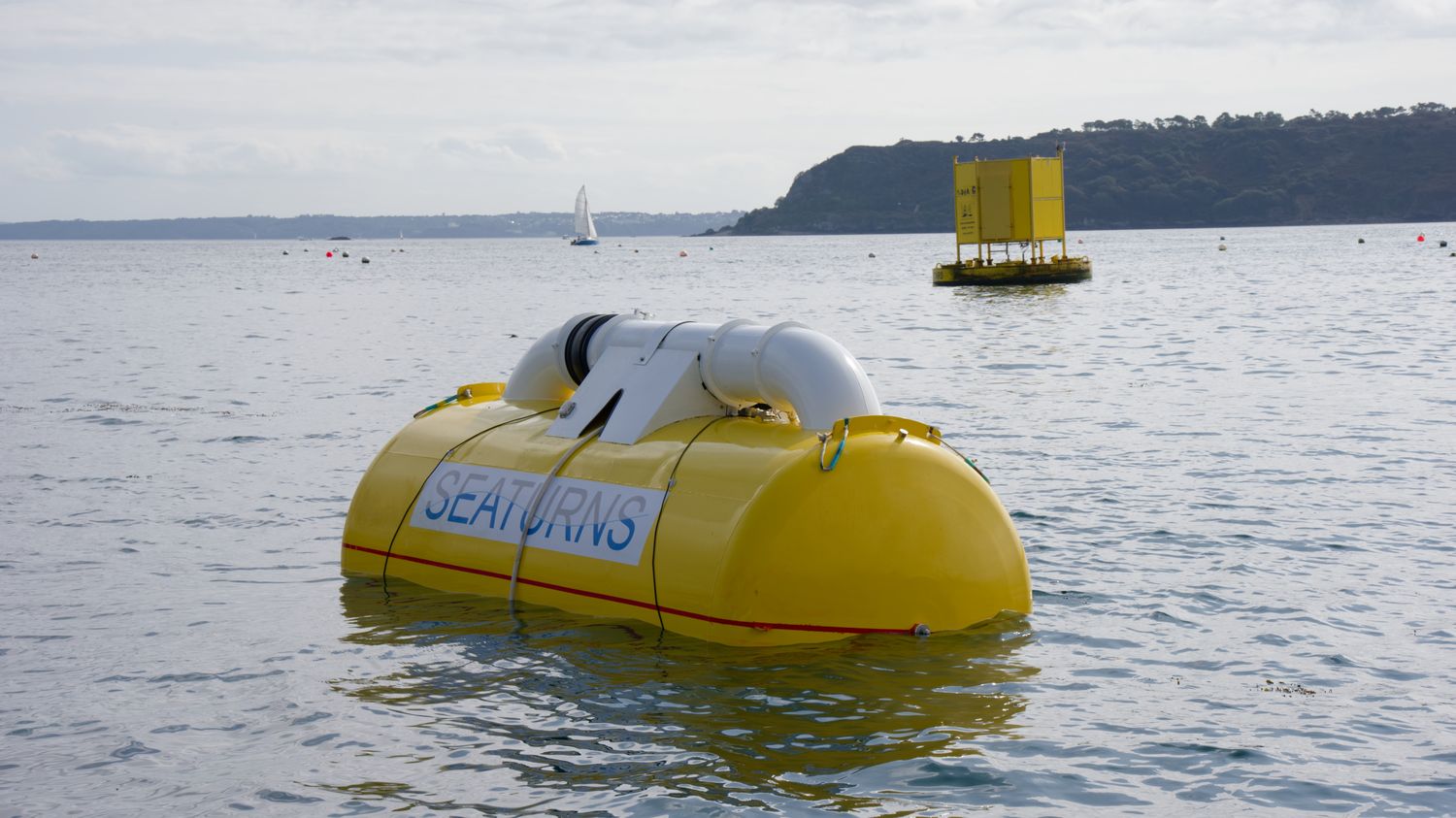At this stage there are only pilot farms but the commercialization of these wave energy production boxes could take place by 2025.
How to recover energy from waves for lighting or heating? To meet this challenge, Ifremer is testing a new system for producing electricity using wave power this November in Finistère.
For a month, a strange yellow cylinder 3.50 meters long has floated tossed by the waves at the entrance to Brest harbor, on the Ifremer test site in Saint-Anne du Portzic. It is secured to the bottom by two anchors. This large yellow cylinder produces electricity using the force of waves. It was developed by the Bordeaux start-up Seaturns. The principle is simple: under the action of the swell, this cylinder, rocked by the waves, begins to oscillate on the water, which generates a flow of air inside the box and this air flow spins a turbine that produces electricity.
The final model will be four times larger than this prototype, and ultimately 10 cylinders stowed in the open sea, side by side, will thus be able to produce the equivalent of what an average wind turbine produces, enough to supply around a hundred homes with electricity, heating included.
Gigantic potential across the world
This system has already been evaluated on a small scale in basins, but here, in a natural environment, the aim is to test the robustness of the system in real conditions, facing more irregular waves than in a basin. This prototype also successfully passed the Ciaran storm test two weeks ago, facing waves three meters high and winds of more than 150 km/h. With this test, it is also a question of checking the resistance of the box to corrosion, and seeing if algae clinging to the system can modify its performance. This test off the coast of Brest should last 10 months, with a view to possible marketing of these energy production boxes by 2025.
Although there are pilot farms around the world at this stage, wave energy has not yet been commercialized on a large scale. However, the global resource is gigantic around the world, recalls Ifremer which is participating in these tests. Wave energy could be exploited in Northern Europe, on the Atlantic coast, off the coast of the United States and Canada, in Australia, New Zealand, South Africa and of course in France.
It is a system that could provide inexpensive energy to isolated islands, or which could also power seawater desalination plants on the coasts. According to the World Energy Council, wave power could potentially cover 10% of global electricity demand.
